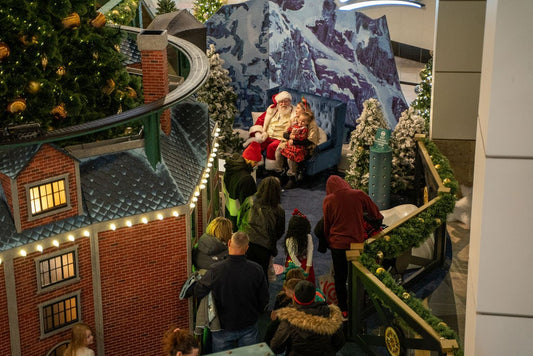Connie Brown’s Livingston Street apartment appears as a small red diamond at the center of her latest map. The grid of East Rock’s streets, a snippet of the Quinnipiac River, the large green patch of East Rock Park—all are enclosed within a circular red perimeter studded with knobs, evoking the now-familiar shape of the novel coronavirus.
Here, the virus crown (or “corona”) is repurposed to suggest a 24-hour clock. “Hope is the thing with feathers,” Brown has lettered across the bottom, a quotation from Emily Dickinson, while recorded up one side is the date 5-1-2020 and that day’s New Haven count: 1,646 positive cases, 63 deaths. A yellow-throated vireo perches on the crown, painted almost three-dimensionally, as if it has just landed there. The map’s key makes clear its theme: Red and green circles mark Brown’s favorite neighborhood destinations and indicate what was open and, mostly, what was closed during quarantine.
sponsored by
This map is just one of hundreds that Brown has created in her 30-year, self-taught career as an artist-mapmaker, but it’s the first one she’s done for her own purposes in a very long time. Maps, she says, have the ability to touch people personally, as this one does her. “There’s a childish element, in a way, for even the most sophisticated people,” Brown says. “People like seeing, on a map, places they’ve been… A lot of maps are beautiful or have a certain graphic quality that people are drawn to. And they’re informative.”
Many of Brown’s clients come to her business, Redstone Studios, for a one-of-a-kind map after they’ve taken a special trip. Others have a more professional need. For example, she painted a map of the whistle stop tour Abraham Lincoln took on the way to his inauguration for the frontispiece of the newly published book Lincoln on the Verge, a map she planned with author Ted Widmer entirely at Pepe’s Pizza.
Brown works almost exclusively in acrylic wash and pen on canvas. Currently, she’s creating a map of Yellowstone National Park, drawing upon an artists’ residency she was awarded to work there last summer. Above the partially painted, unstretched canvas on her studio wall she’s tacked three folded versions of other maps for study and various tissue paper shapes. The park’s contours in shades of green fill most of the red-dashed frame. Eventually, Brown will paint different species from the park around the border.
In addition to working as a mapmaker, Brown volunteers as president of the Connecticut Map Society, an organization she founded in 2017 with Maryann Ott and Brian Tims to bring together map-lovers from across the state. Most of the society’s 80 members joined “just ’cause they liked maps,” Brown says. “They’re not collectors or experts or scholars or anything… I think it’s our job to make them see how wide mapping is.” The group’s interest in maps ranges from antiques to GIS (Geographic Information System) maps, which use computer technology to create a visual representation of data. Membership costs $25 for students, $35 for basic members and $75 for sustaining members.
Like so many organizations, the Connecticut Map Society had to postpone its spring events; in the fall, it hopes to lead field trips to the New Haven Museum and William Reese Company. They’ll also hold their usual show-and-tell sessions where members bring in a map to share, as well as lectures by experts and social gatherings. The theme of all of the meetings, about six per year, is “the intersection of maps and everything.”
Brown’s own education in maps originated high on a peak in the Pyrenees, where she’d gone on a hiking tour at a time when she was at a crossroads in her life. At one particularly stunning vista, she felt an unusual urge. “Your desire, I think, when you see vast nature—beautiful nature—is to somehow capture it or immortalize it or celebrate it in a lasting way,” she says, “and I had a camera, but my thought was that I would make a map of it.”
The trouble was, she knew nothing about making maps. She collected a list of the trip’s routes as well as a couple of maps of Spain and France. Back at home, she struggled to figure out how to reconcile their differing scales, but she learned as she went. When it came time to fill out job applications for a return to teaching, her first career, she thought she’d give mapmaking a try instead. “I’m pretty cautious, but I thought, ‘Eh, how hard could it be?’ Well, it was pretty hard,” she says, laughing.
She made a few maps, cold-mailed a New York Times reporter with some slides, and miraculously got a little one-paragraph blurb in the paper with a small image. That was enough; the phone started ringing. “And then I had to make maps!” Brown says, as if she’s still astonished by what happened next. She stayed up late and learned “from the bottom up” how to hand-render a map via “trial and error, with the emphasis on error.”
Today, Brown’s maps are all one-of-a-kind works of art that sell for thousands of dollars. On occasion, she runs popular mapmaking workshops for other would-be cartographers. She’s fortunate, she says, that her work routine at her home studio hardly changed during quarantine. But she’s eager for those red circles on her map to turn green again and for the number of the virus’s victims to stop rising. Until then, her studio pretty much remains her world, where other worlds are recreated.
Written and photographed by Kathy Leonard Czepiel.








